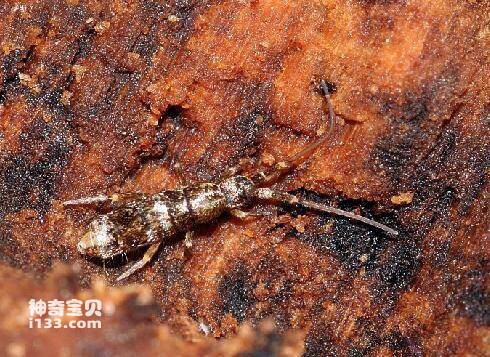The oldest insect fossil is a wingless springtail insect found in the middle Devonian strata 350 million years ago. The body of this insect has been clearly divided into three parts: head, thorax and abdomen. The emergence of the thorax as the center of movement clearly represents the birth of a new type of arthropod called insects. Another primitive wingless insect called the tassel was found in the Carboniferous strata, but it was recorded as a crustacean when it was first discovered. It was not recognized as a primitive insect until 1958, 80 years later. At that time, Sarnov, a scientist from the former Soviet Union, found a similar species in the Permian strata of Moscow. These fossils were very similar to modern tassels. Later, scientists discovered more insect species in the early Carboniferous strata of Mexico and the Permian strata of Europe. Some of them were very small, and some could be as large as more than 30 mm.

What animals did these primitive insects evolve from? Scientists speculate that the hypothetical ancestor of insects should be a worm-like animal with synchronic body segments, each with a pair of appendages. During the evolution of such an ancestor into an insect, several segments at the front of the body were concentrated and fused to form a head, and the appendages on these segments evolved into antennae and mouthparts; three segments immediately behind the head The individual segments still remain independent, but each segment develops a pair of powerful movement organs - feet, and later develops two pairs of wings, forming the movement center of the insect's thorax; the segments behind the thorax change very little. However, the appendages are generally degenerated, and only the appendages of the abdominal terminal segments have evolved into caudal palps and egg-laying organs.
Looking further back from the hypothetical ancestors of insects, scientists believe that their origins can be traced to an ancient group of terrestrial arthropods. Arthropods have already existed on the earth as early as the Precambrian period about 1 billion years ago. Initially, they lived in shallow seas along the coastline. Later, they evolved in two opposite directions: one entered the open ocean and the depths of the ocean, evolving into shrimps, crabs and other crustaceans that are very prosperous in the modern ocean; The other branch left the ocean to open up a new terrestrial ecological environment that had not yet been occupied, and evolved into the centipedes, centipedes and other myriapods that can be seen everywhere today, as well as spiders, scorpions, ticks and mites and other arachnids and insects, and finally successfully conquered the dry land. Among them, the most successful insects have shown extremely strong vitality since their emergence and have rapidly developed on the earth.
animal tags: Springtails centipedes spiders scorpions ticks
We created this article in conjunction with AI technology, then made sure it was fact-checked and edited by a Animals Top editor.